Mokugyo
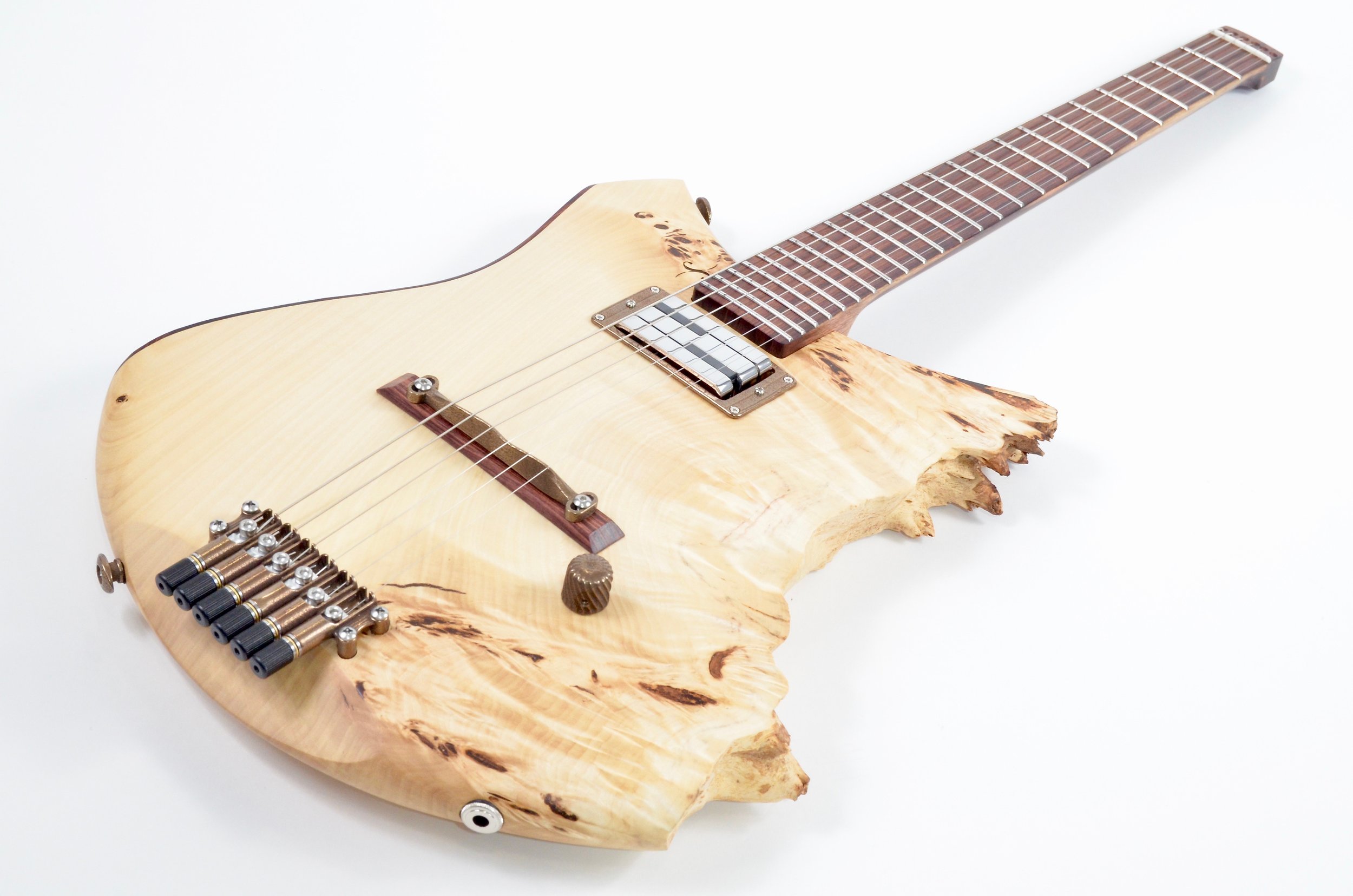
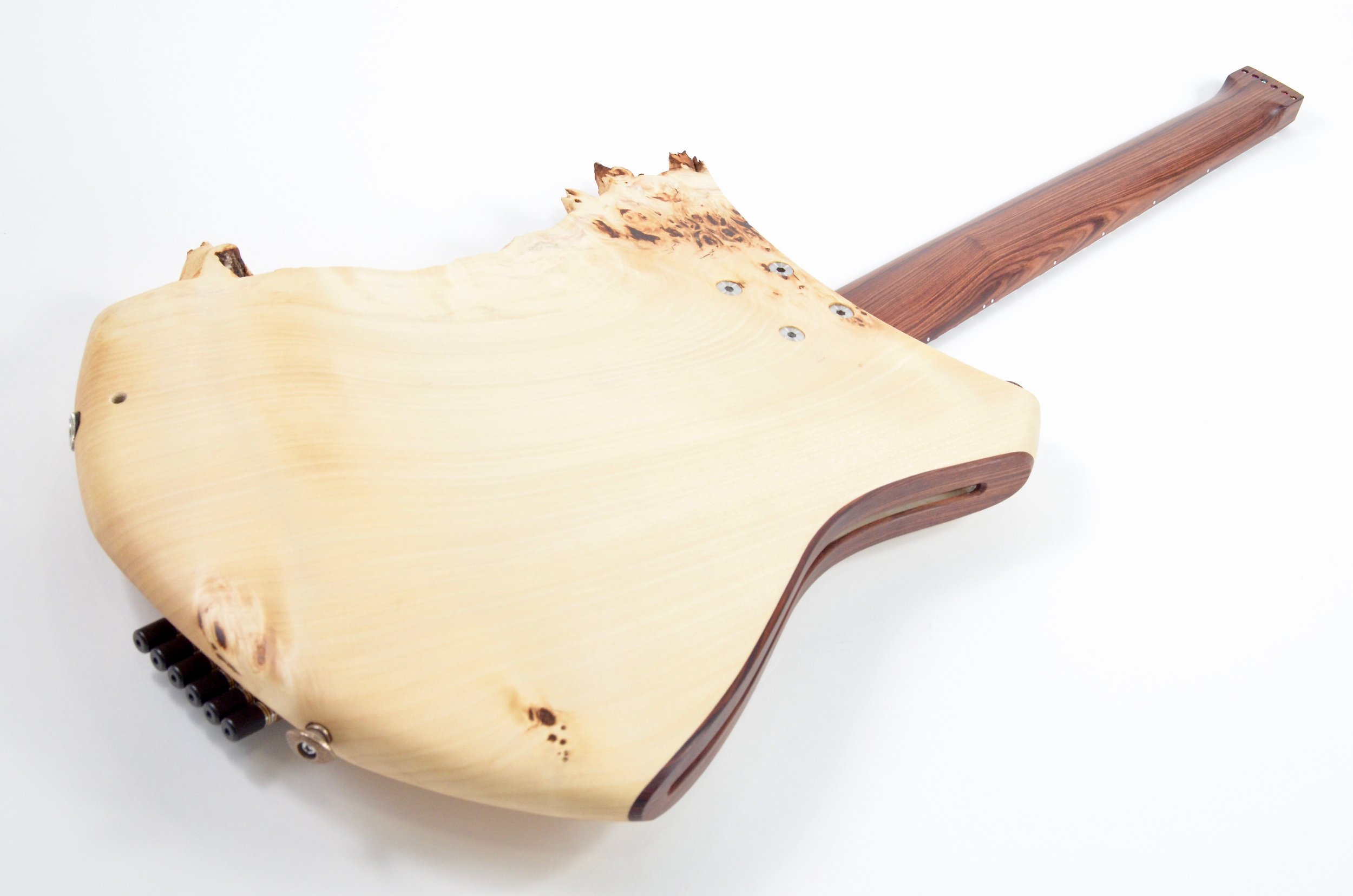
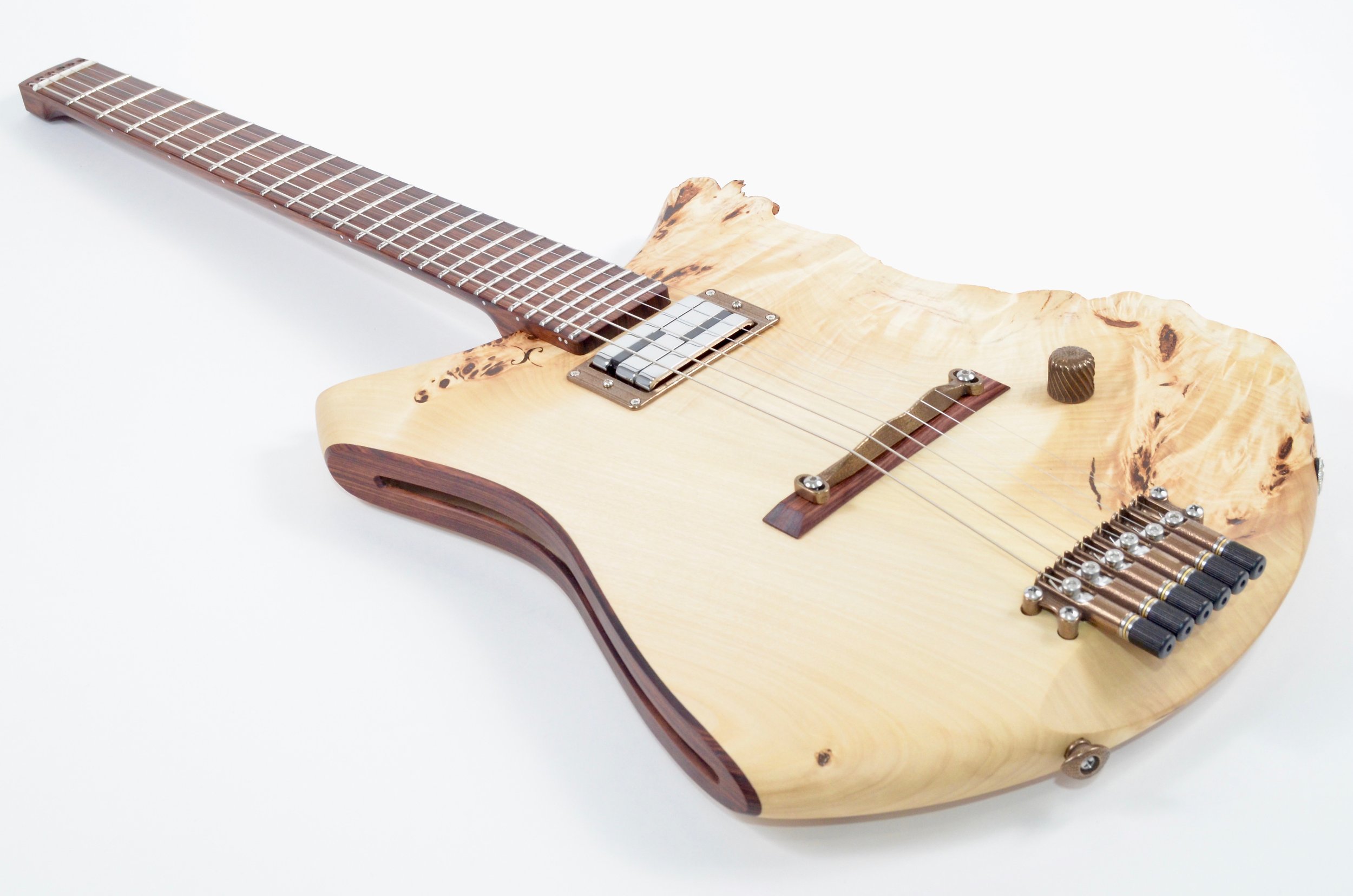
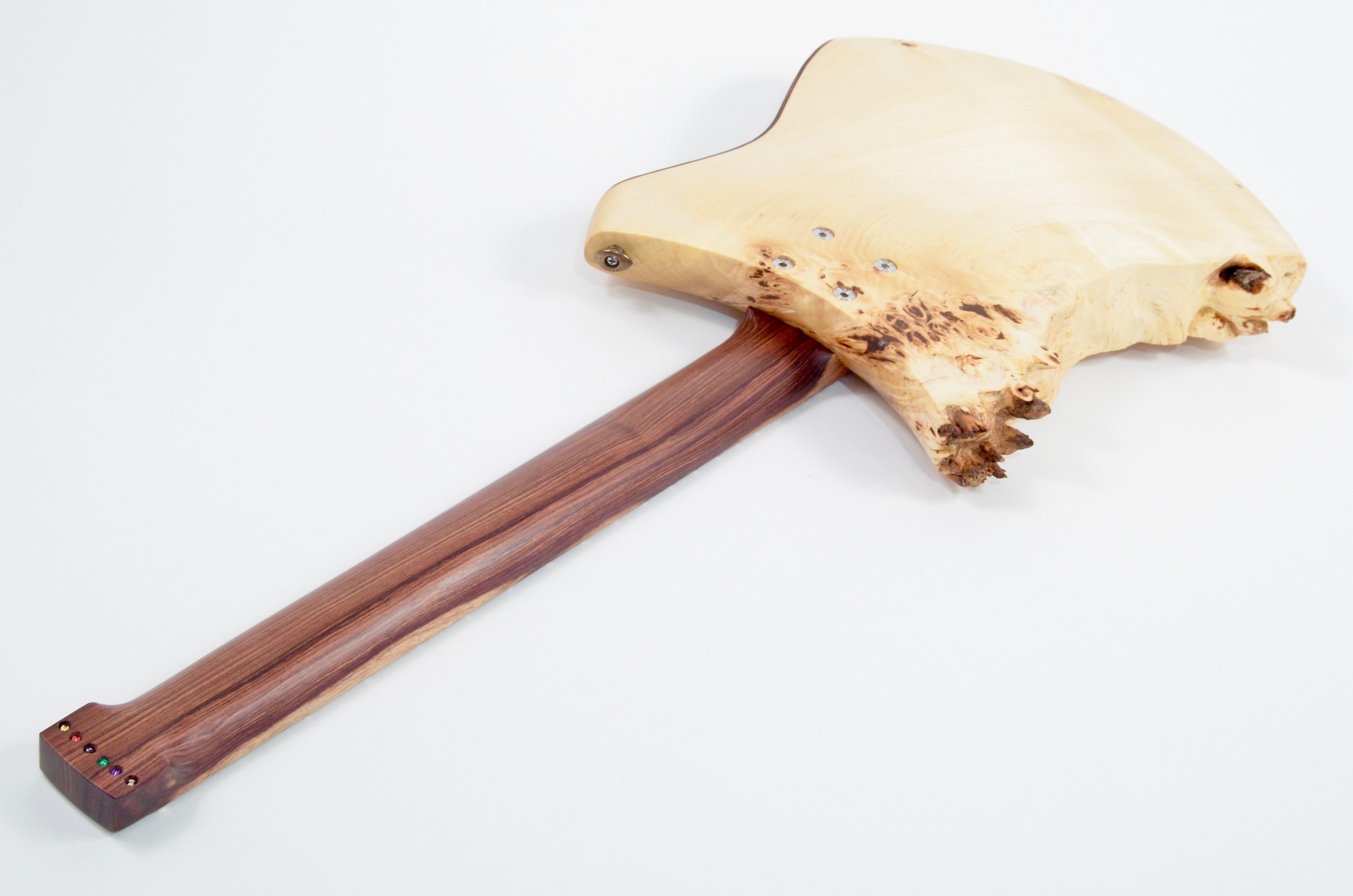
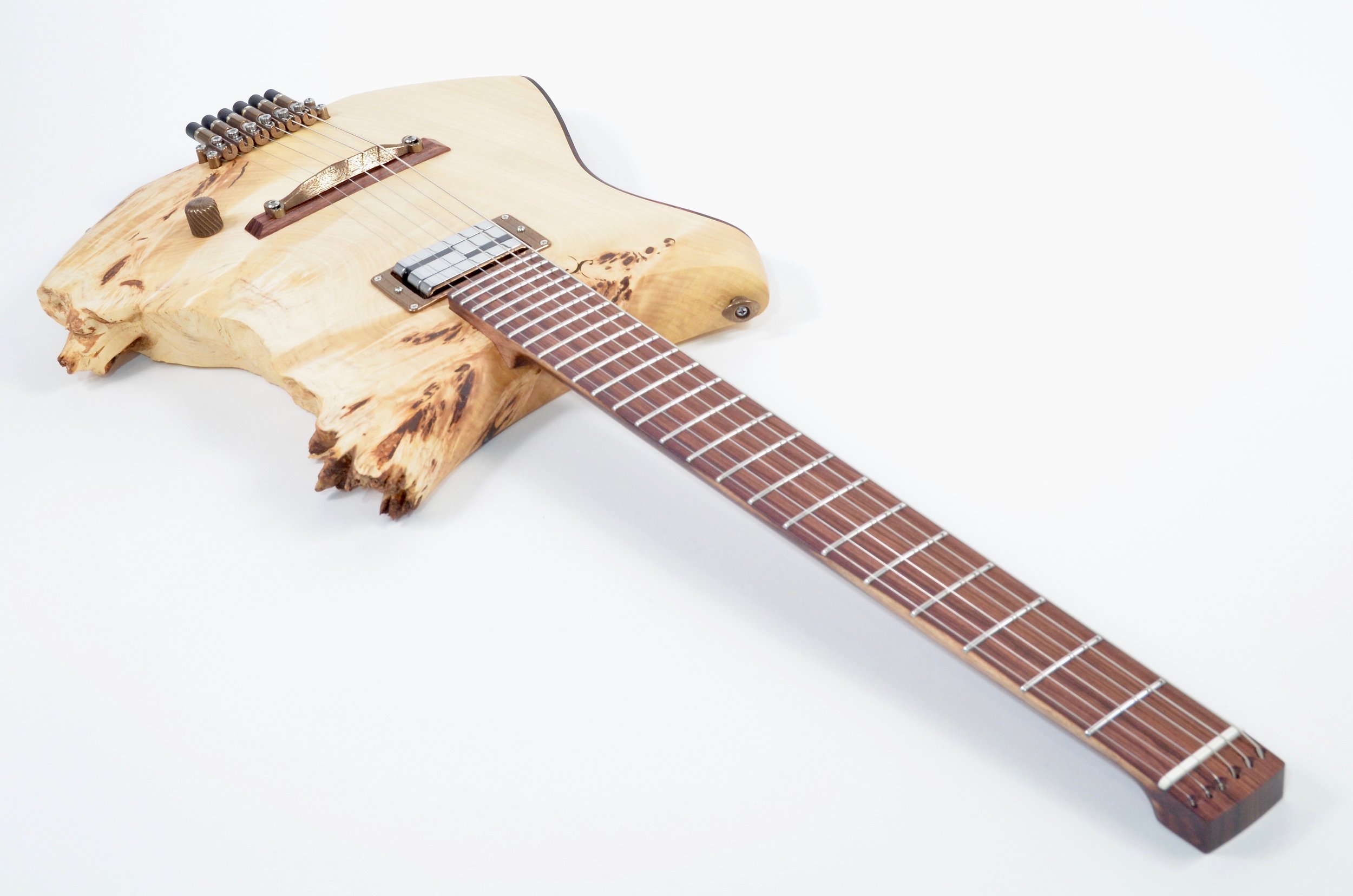

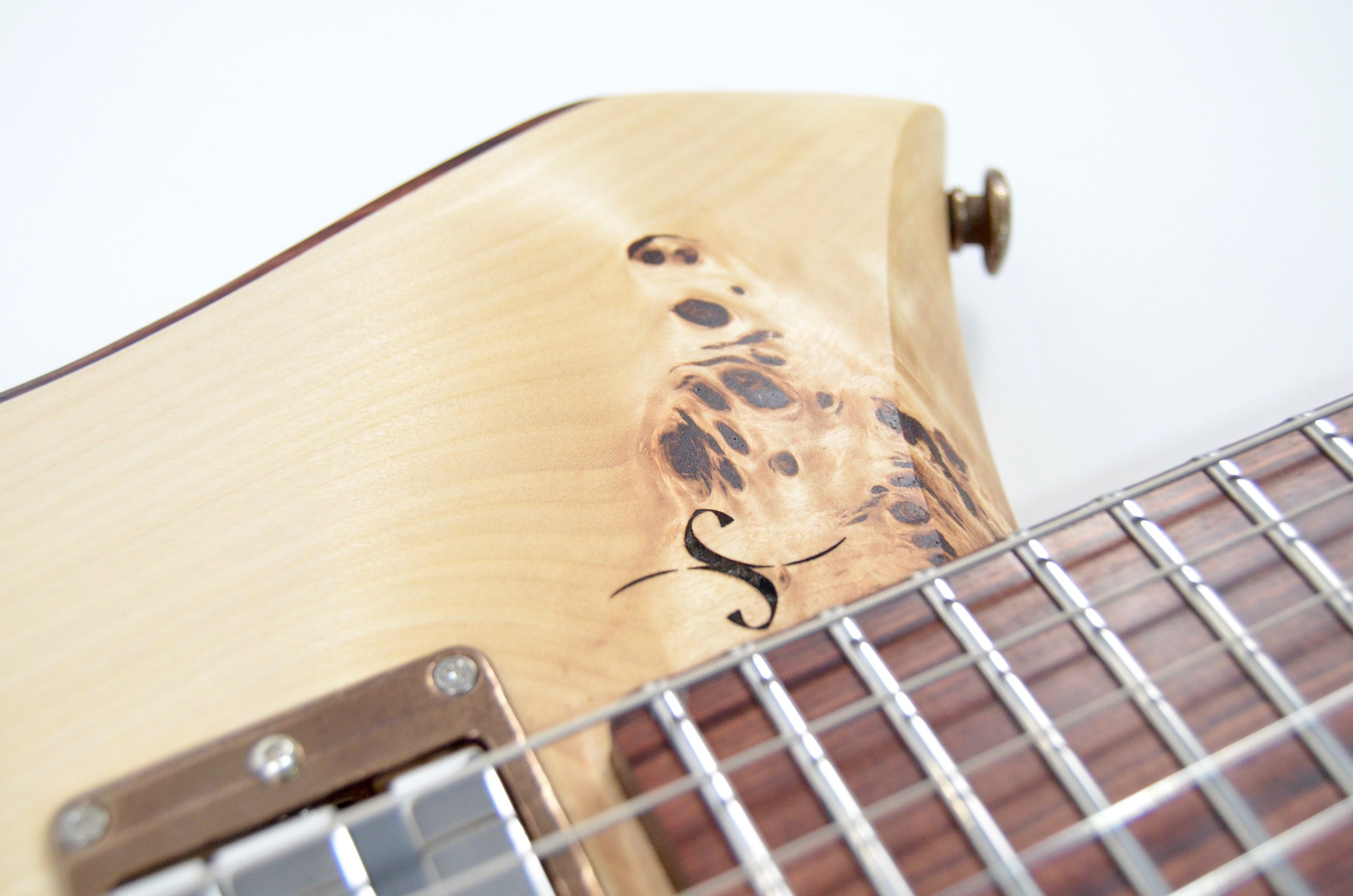
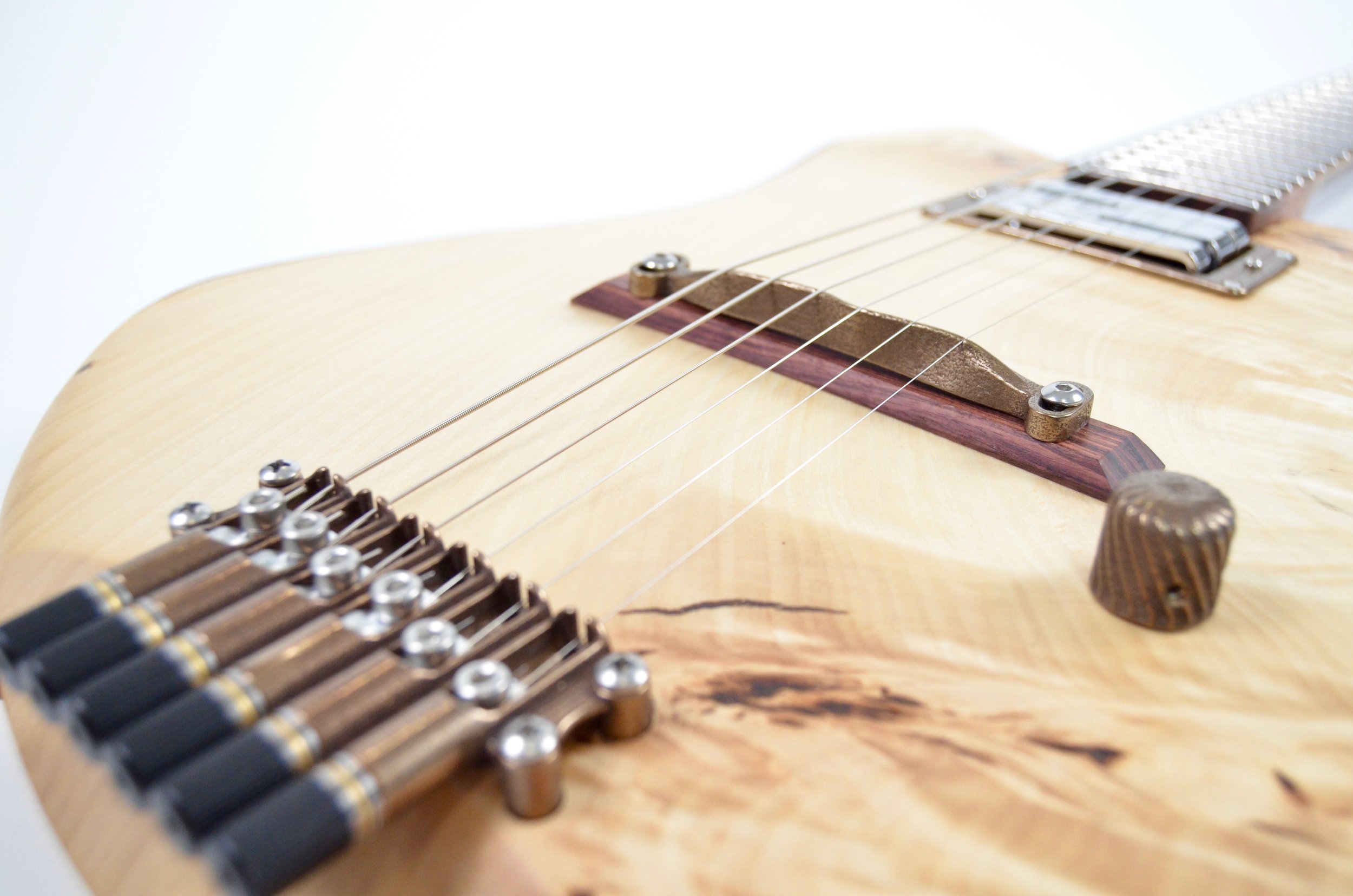
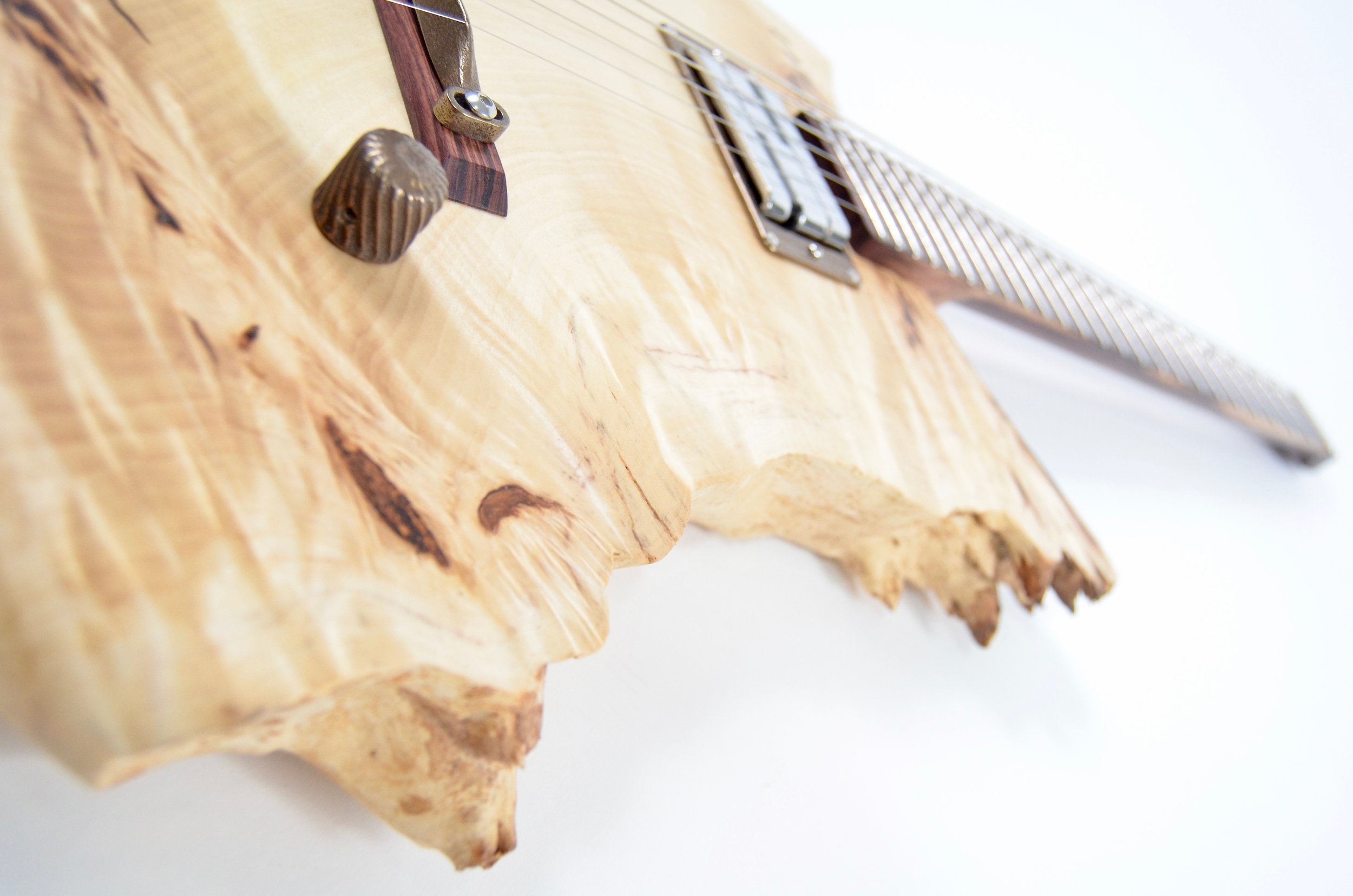
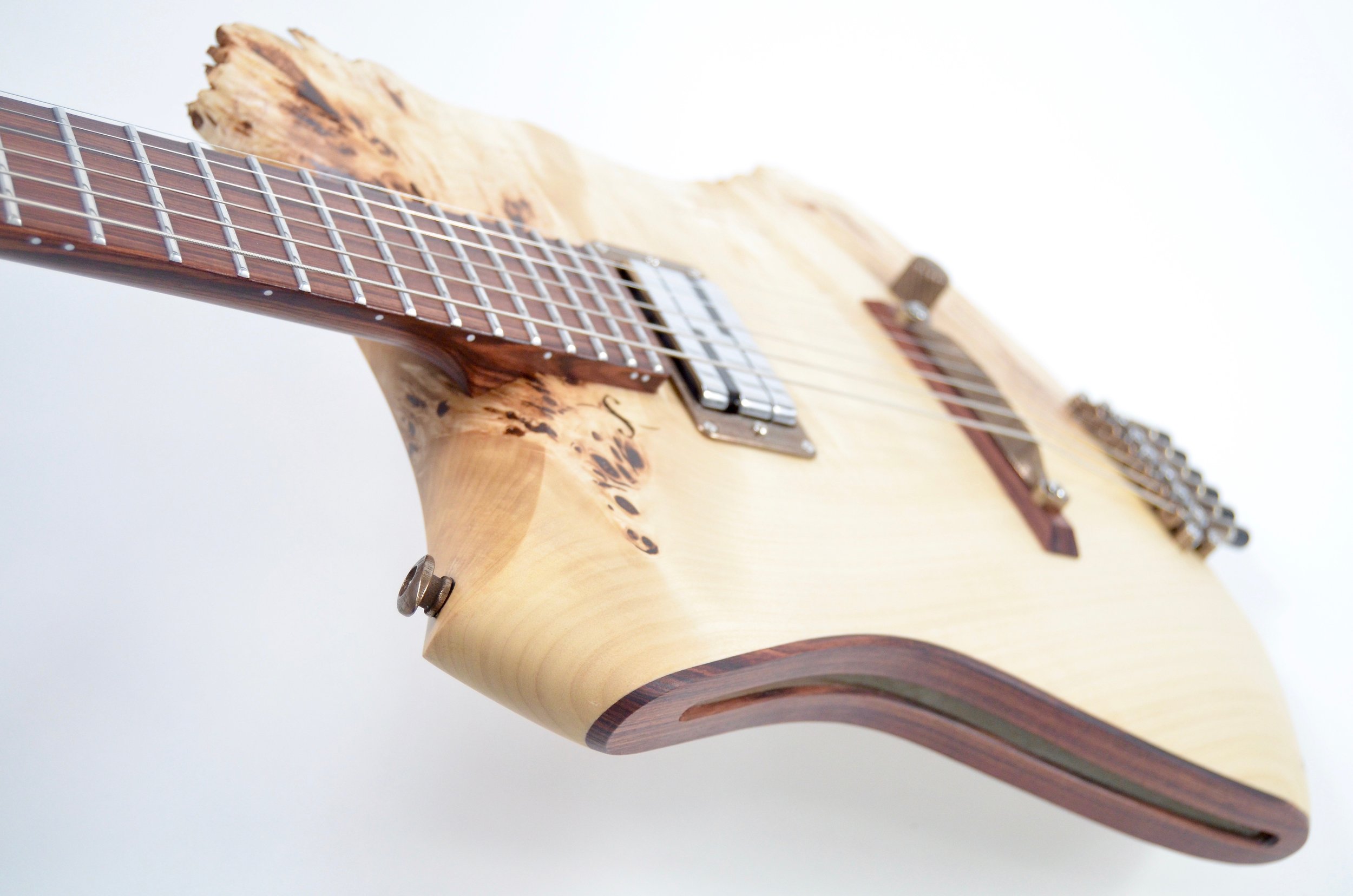
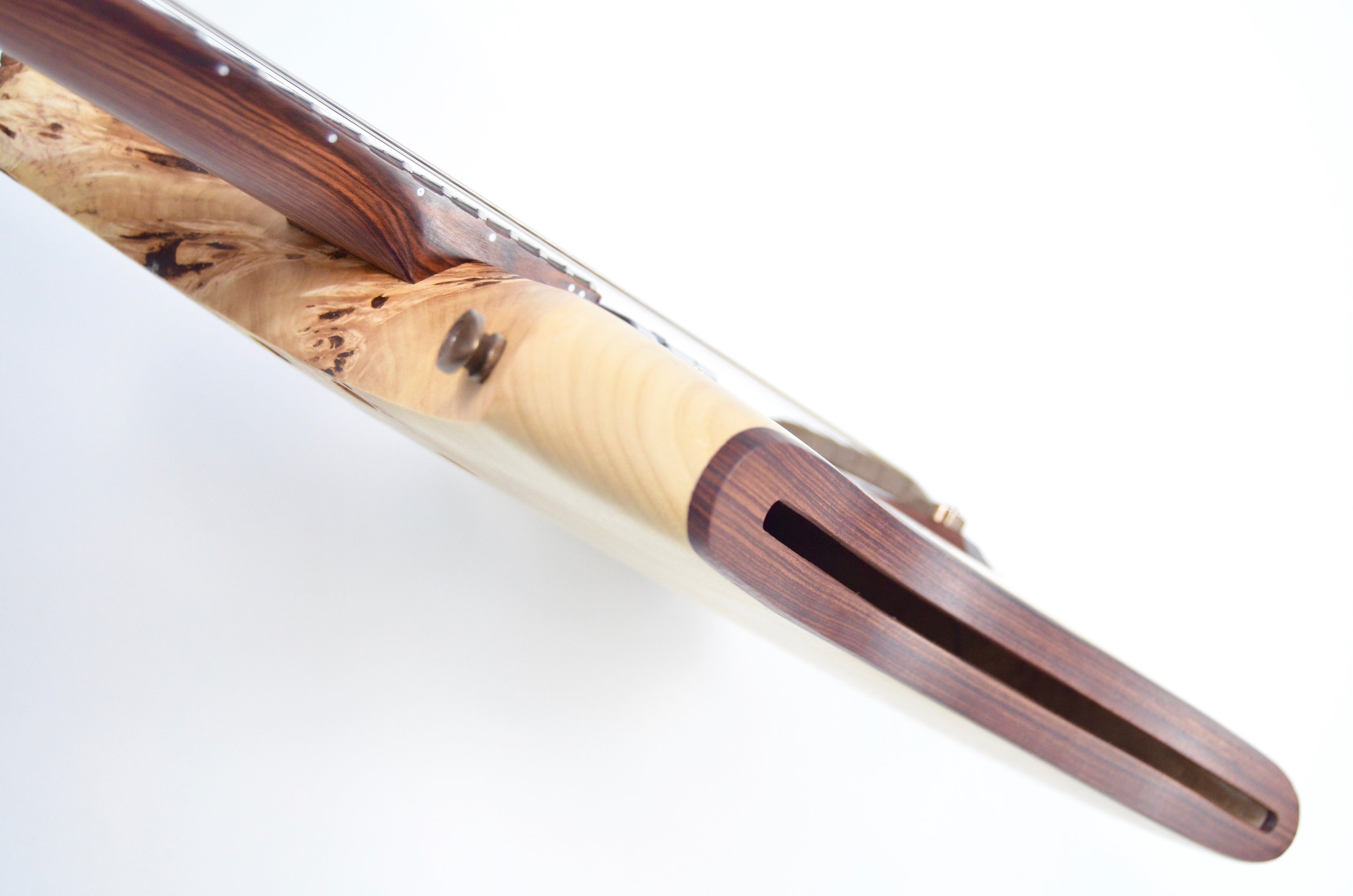

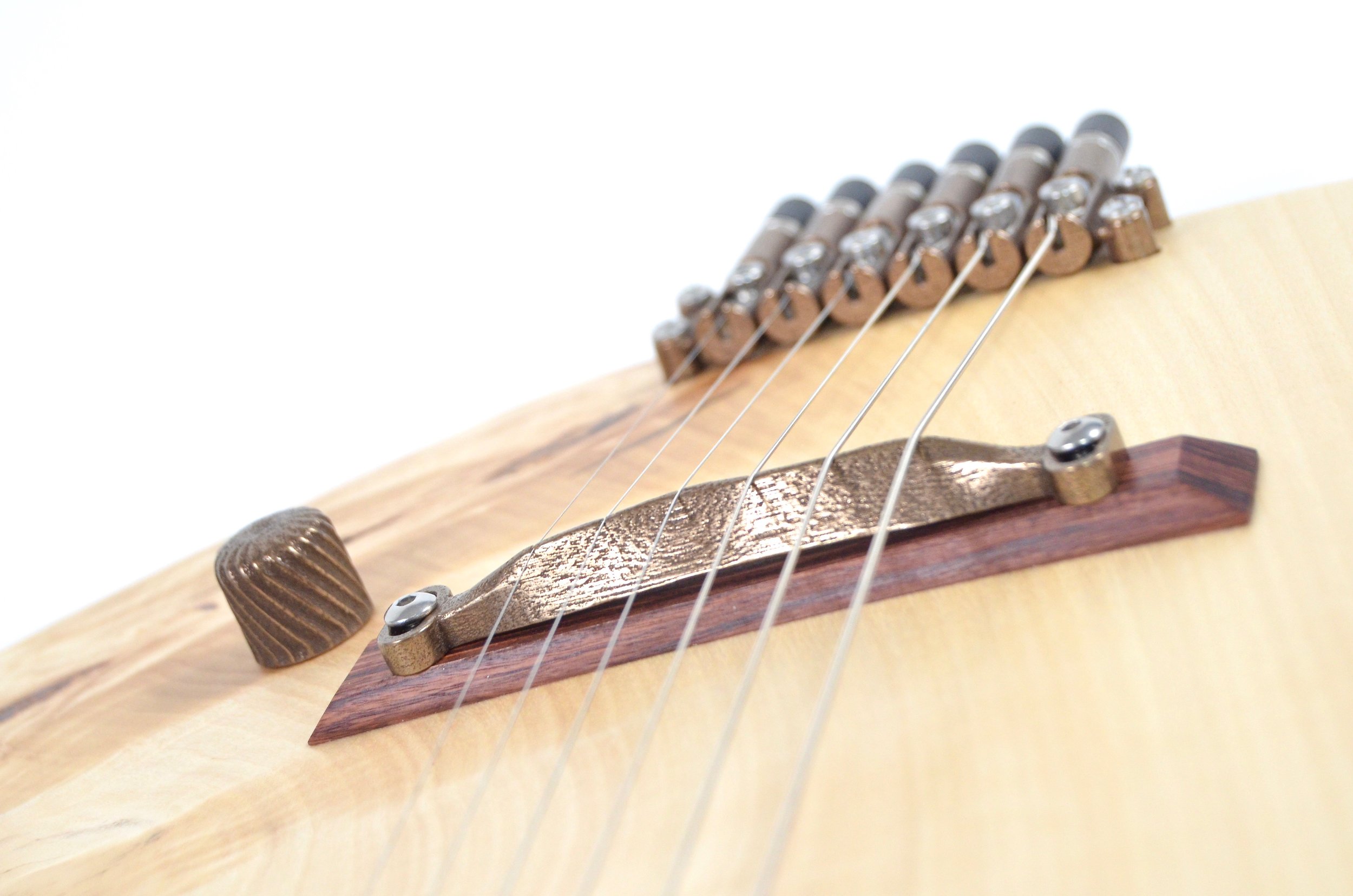
During long chanting meditations, Japanese monks would knock on carved hollow wooden blocks, whose sharp report would ensure everyone stayed awake. Typically, these blocks were decoratively shaped as fish (appropriate since it was thought that fish never sleep): hence “Mokugyo”, which in Japanese literally means “wooden fish”.
Technically, they are a variety of slit drum, which is one of mankind’s oldest musical instruments. Slit drums of a great variety of sizes and shapes have been used by almost every culture with ready access to wood, all around the globe, since time immemorial. But I believe that Mokugyo is the first guitar constructed in this manner.
The thick burled single-piece poplar body is carved out almost completely hollow from the bass side edge, using a long custom-made chisel, while leaving the treble side’s live edge alone. This gives it a unique resonant quality; not loudly acoustic, but with a unique voice that responds well to active, percussive playing.
The soft poplar edge is trimmed with hard Kingwood, a rare true rosewood from Brazil. This means that, if desired, the player can tap out the rhythm on the edge if desired. The neck is carved from a matching piece of this flawless and perfectly quartered kingwood, with a modern U profile and jumbo stainless steel frets, dressed on the Plek machine as usual.
The bridge, tuners, strap buttons, pickup ring, and single volume knob are custom made of bronze-finished 3-d printed stainless steel/bronze. The single magnetic neck pickup is a Lace Alumitone humbucker. It is complimented by a hidden surprise: on the inside edge of the slit is a piezo transducer hooked up to the ring terminal of the output jack. By using a stereo cable, this signal can be used to enhance the acoustic tone, routed through special effects, or even be used as a MIDI trigger!
That’s pretty good for a fish, I think.
